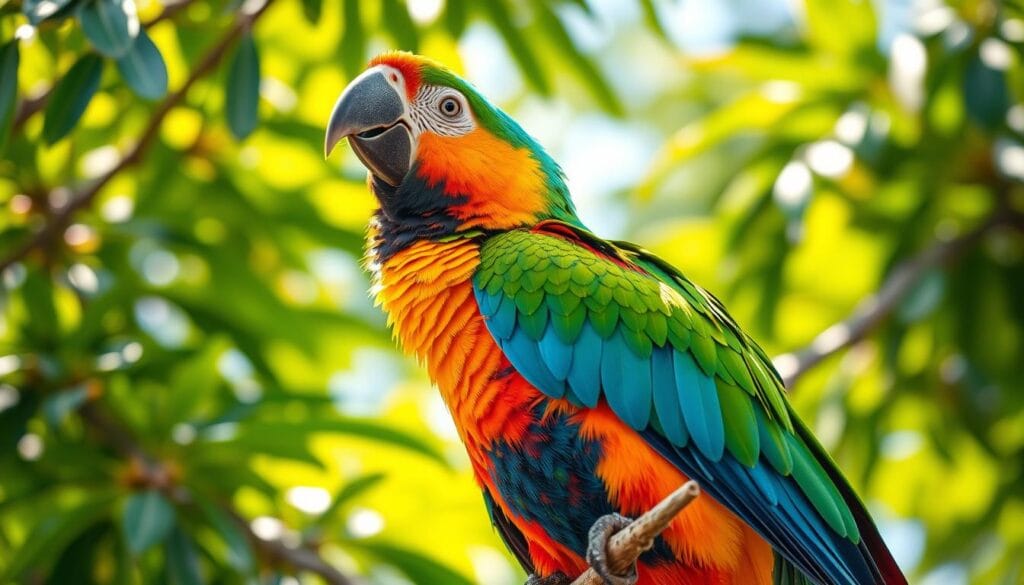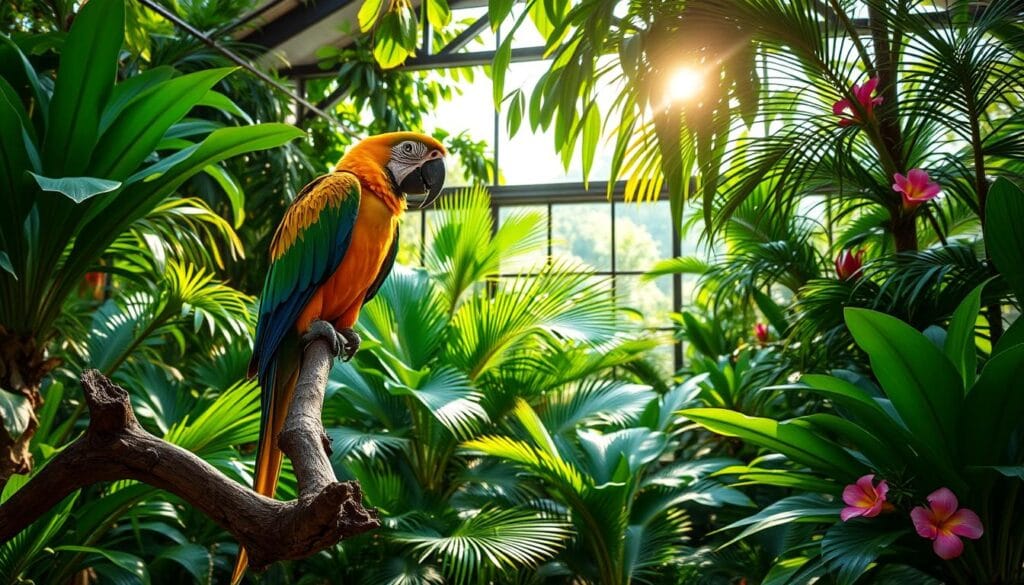Welcoming a parrot into your home can be a life-changing experience. These vibrant, intelligent birds bring joy, companionship, and endless fascination. However, caring for a parrot is more than just providing a cage and food—it’s a long-term commitment that requires attention to detail and a deep understanding of their needs.
Parrots are not just pets; they are family members. With lifespans ranging from 20 to 80 years, depending on the species, owning a parrot is a decades-long journey. Their care involves creating a stimulating environment, providing a balanced diet, and ensuring regular veterinary checkups. It’s also about fostering their mental and emotional well-being through social interaction and enrichment.
Proper care for your feathered friend goes beyond the basics. It’s about understanding their unique personalities, offering a variety of toys, and creating a safe, nurturing space. Whether you’re a seasoned owner or a newcomer, this guide will walk you through the essential tips and best practices to help your parrot thrive.
Table of Contents
Introduction to Parrot Care: Long-Term Commitment and Joy
Bringing a parrot into your life is an exciting journey that combines joy with responsibility. These colorful birds are known for their intelligence and ability to form strong bonds with their owners, making them unique companions. However, caring for a parrot is a serious commitment that requires dedication and understanding.
The Joy and Responsibility of Parrot Ownership
Owning a parrot can be incredibly rewarding. These birds are not just pets; they become part of your family. Their intelligence and ability to interact make every day an adventure. Whether it’s learning new tricks or simply enjoying quiet moments together, the companionship of a parrot is unmatched.
But with the joy comes responsibility. Parrots can live for 20 to 80 years, depending on the species. This means you’re making a long-term commitment to provide the care and attention your bird needs. It’s important to understand that parrots require more than just a cage and food—they need mental stimulation, social interaction, and a safe environment to thrive.
Key Considerations for Parrot Ownership:
- Daily Interaction: Parrots need regular social interaction to stay happy and healthy. Without it, they can develop behavioral problems like feather plucking.
- Mental Stimulation: Providing toys and activities that challenge your parrot’s mind is crucial. Bored birds can become destructive or depressed.
- Long-Term Commitment: Before bringing a parrot home, think about whether you can commit to caring for it for its entire lifespan. Some parrots can outlive their owners.
In the following sections, we’ll explore the key aspects of parrot care in detail, including housing, nutrition, health, and enrichment. By understanding these elements, you can create a happy and fulfilling life for your feathered friend.
Understanding Your Parrot: Species, Behavior, and Natural History

Parrots are fascinating creatures with a rich diversity that spans over 350 species. Their natural history traces back to the Jurassic era, evolving into the vibrant birds we know today. Each species has unique traits shaped by their environment and social structures.
Exploring Popular Parrot Breeds and Their Origins
From budgies to macaws, each breed has distinct characteristics. Larger parrots, like macaws, are known for their bold personalities and need ample space. Smaller species, such as cockatiels, are more subdued but equally engaging.
Recognizing Natural Behaviors and Social Cues
In the wild, parrots spend most of their day foraging and interacting. They use perches to rest and socialize. At home, replicating these behaviors is key. Provide toys that challenge them and encourage natural foraging instincts.
- Natural Diet: Fresh fruit and vegetables are essential. Avoid toxic foods like chocolate and avocado.
- Enrichment: Rotate toys regularly to keep your parrot stimulated and happy.
- Environmental Impact: Everyday items like windows and cooking aromas can affect behavior, so be mindful of their presence.
Understanding your parrot’s behavior and needs is crucial for their well-being. By providing the right environment and enrichment, you help them thrive and maintain their natural behaviors.
Setting Up a Safe Home Environment
Creating a safe and welcoming space for your parrot is essential for its well-being. A well-organized area not only reduces stress but also ensures your feathered friend stays healthy and happy.
Selecting the right cage is the first step. Choose a cage that offers ample space for movement and proper flight. The cage should be made from non-toxic materials, avoiding options like cedar or redwood, which can be harmful. Opt for safer alternatives like pine or maple wood.
| Material Type | Safety | Recommendation |
|---|---|---|
| Cedar | Toxic | Avoid |
| Pine | Safe | Recommended |
| Maple | Safe | Recommended |
Place the cage in a secure area of your home, away from direct sunlight, drafts, and hazardous substances. Daily cleaning is crucial to prevent waste buildup and mold. Remove soiled bedding, clean water dishes, and disinfect all surfaces regularly.
A well-organized area reduces risks and stress for your parrot. Keep toxic plants, small objects, and electrical cords out of reach. By following these guidelines, you can create a safe and nurturing environment for your parrot to thrive.
How to care for a parrot: Housing, Safety, and Enrichment

Creating a secure yet stimulating environment is crucial for your pet’s well-being. Parrots thrive in spaces that mimic their wild habitats, where they can engage their natural instincts.
Your pet’s cage should be spacious enough for full wing extension and movement. Opt for a cage made from safe materials like pine or maple wood, avoiding toxic options like cedar. The cage size should be at least 24 inches wide, 24 inches deep, and 36 inches tall for medium-sized parrots.
| Material Type | Safety | Recommendation |
|---|---|---|
| Cedar | Toxic | Avoid |
| Pine | Safe | Recommended |
| Maple | Safe | Recommended |
“A stimulating environment reduces stress and behavioral issues by up to 50%,” notes a leading avian veterinarian. Use seed mixes and accessories that mirror wild settings. Rotate toys like chew and puzzle toys regularly to keep your pet engaged.
Daily out-of-cage play is essential for physical activity. Provide at least 2-3 hours of social interaction to prevent boredom and feather plucking. This interaction strengthens your bond and ensures your pet’s mental health.
Nutrition and Feeding: Creating a Balanced Diet for Your Bird
Providing a balanced diet is essential for your parrot’s health and longevity. A well-structured diet ensures your feathered friend stays vibrant and thrives throughout the year.
A balanced parrot diet should consist of:
- High-quality pellets (50-60% of the diet)
- Fresh vegetables (20-25%)
- Fruits (10-15%)
- Small amounts of seeds and nuts
Fresh water is crucial and should be available at all times. Change the water daily to prevent bacterial growth. The amount of food your parrot needs depends on its size and activity level. As a general rule, offer 1-2 tablespoons of pellets per pound of body weight daily.
Avoid harmful foods like chocolate, avocado, and caffeine, as they can be toxic. Over time, adjust your parrot’s diet to meet its changing needs. For example, young birds may require more protein, while older birds might need fewer calories.
| Food Type | Recommended Amount |
|---|---|
| Pellets | 50-60% |
| Vegetables | 20-25% |
| Fruits | 10-15% |
| Seeds/Nuts | 5% or less |
By following these guidelines, you can create a nutritious and varied diet that supports your parrot’s health and well-being throughout the year.
Medical Care, Grooming, and Behavioral Training for a Healthy Parrot
Maintaining your parrot’s health requires a combination of regular veterinary checkups, proper grooming, and effective behavioral training. These practices ensure your feathered friend stays vibrant and thrives in their environment.
Regular vet visits are crucial because parrots often hide signs of illness until it’s severe. Schedule annual checkups to catch potential issues early. Even subtle changes in behavior or appearance can signal a need for veterinary attention. A vet can perform essential procedures like beak trimming and nail care, preventing overgrowth that could lead to injury.
When it comes to grooming, focus on your parrot’s beak and nails. A trimmed beak helps your parrot eat and interact with its environment comfortably. If you’re unsure about grooming techniques, consult a vet for guidance. Proper grooming not only enhances your parrot’s appearance but also prevents health complications.
Behavioral training is another key aspect of parrot care. Use positive reinforcement techniques to address issues like screaming or feather plucking. Reward calm behavior with treats or praise to encourage good habits. This approach strengthens the bond between you and your parrot, creating a more harmonious relationship.
Environmental factors also play a significant role in your parrot’s health. Keep the room temperature between 65-80°F to ensure comfort. Avoid placing your parrot near windows or areas exposed to drafts. Additionally, be mindful of cooking fumes, as they can be harmful. Ensure your parrot’s toys and enclosure are made from safe, non-toxic materials to prevent disease risks.
Recognizing when your parrot needs extra attention is vital. Look for changes in behavior, appetite, or physical condition. These cues often indicate stress or underlying health issues. By staying attentive, you can address problems early, ensuring your parrot remains healthy and happy.
For more insights into specific parrot species, visit our guide on the Eclectus parrot, a stunning example of avian beauty and intelligence.
Conclusion
Embracing the journey of parrot ownership is a rewarding adventure that requires dedication and compassion. By understanding your parrot’s species-specific needs and providing a nurturing environment, you create a foundation for a happy and healthy life together.
Your commitment to housing, nutrition, and regular medical care ensures your feathered friend thrives. A balanced diet, safe living space, and mental enrichment are vital for their well-being. Every feather and behavior reflects the quality of their environment and care.
Investing time and thoughtful attention transforms your parrot’s life and enriches your family’s daily experience. With dedication, you foster a lifelong bond, turning your home into a haven of joy and companionship.


2 thoughts on “How to Care for a Parrot: Tips for Beginners and Pros”